
Shakespeare in the Ruff is happy to welcome Giovanni Spina as our 2019 Resident Company Member!

Shakespeare in the Ruff is happy to welcome Giovanni Spina as our 2019 Resident Company Member!
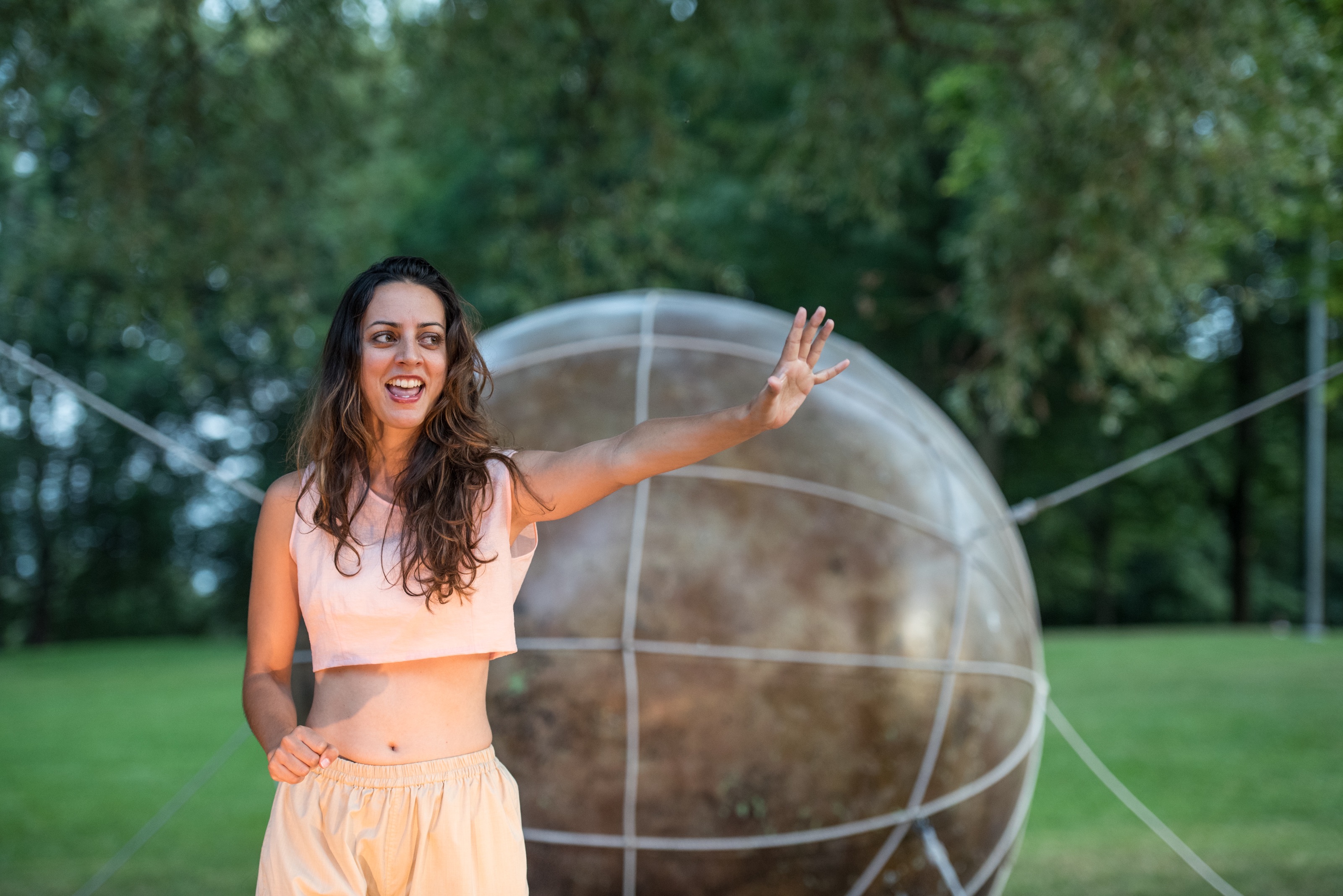
We asked three Ruff experts to interview Eva about this new role: Sienna Singh, Jahnelle Jones-Williams and Troy Sarju – graduates of the Young Ruffian Program, who became our Young Ruffian Chorus in Portia’s Julius Caesar. As emerging artists and future leaders themselves, they interviewed Eva and gave her some advice.
Sienna: What excites you most about this new role? What do you think will be the biggest challenge?
What I’m most excited about are the challenges! One of which will inevitably be fielding the question of “who really calls the shots?” (aka “who has the last call?” or “who wears the pants” [at the time of writing, both Kaitlyn and I are wearing skirts]). I’m collaborative in my art-making, so naturally, I’m collaborative in my leadership style. Kaitlyn and I have worked together closely, and most major decisions were made together. Now the financial and organizational structure of the company match how we best work. So, we aren’t really splitting leadership, we’re doubling it. That opens up a lot of exciting possibilities.
This doesn’t mean we don’t disagree – we do, and that’s great. Conflict is a necessary part of theatre. I have a deep respect for Kaitlyn, and we both have a deep respect for the power of theatre. At the end of the day, what’s best for our community guides our decisions. The challenges that comes from disagreement – having to articulate, having to listen, and having to put your ego aside – help us grow as artists.
A second, ever-present challenge is that I love Shakespeare… sometimes. As a biracial feminist, it’s pretty tough for me to approach the work without cringing. There’s a lot about Shakespeare that’s connected to colonialism, white supremacy, and patriarchal structures, and I spend long swaths of time wondering if/how I’m reinforcing those systems by presenting Shakespeare (you know, your regular Sunday brunch thoughts). I’m excited to truly grapple with this conflict. You can’t wrestle something if you’re watching from the sidelines, you’ve got to get in the ring. I don’t expect an easy answer – I’m not looking for easy anyway. Sienna, text me in a few years and I’ll let you know what I’ve mulled over.
Sienna: If you could swap bodies with anyone, dead or alive, who would it be and why?
Beyoncé. Any other answer is a waste of a magical swap.
Jahnelle: Why do you like working with Ruff?
The people. I’ve surrounded myself by some pretty stellar hearts. From the Danforth barista that knows my usual, to the artists that open their hearts to the park, to the ever-supportive Board of Directors, to my drum-beating rock star Old Ruffians, I couldn’t ask for a better community.
 I’m especially grateful for my work-wife, Kaitlyn. When we first chatted about my joining the company two years ago, I shared the fact that I hadn’t always felt welcomed into Shakespeare, and that despite it being so “universal”, I never saw families that looked or sounded like mine, and that was something I wanted to change. She’s never made assumptions, she’s never been afraid to ask questions, and she’s always listened with an open heart. She’s a true partner, and I couldn’t ask for better.
I’m especially grateful for my work-wife, Kaitlyn. When we first chatted about my joining the company two years ago, I shared the fact that I hadn’t always felt welcomed into Shakespeare, and that despite it being so “universal”, I never saw families that looked or sounded like mine, and that was something I wanted to change. She’s never made assumptions, she’s never been afraid to ask questions, and she’s always listened with an open heart. She’s a true partner, and I couldn’t ask for better.
Jahnelle: What is your favourite dish? And why? (ex.bowl, plate)
Little ceramic ramekins. I think people make souffles in them (I once warmed nacho cheese in one). They can be so hot and so cool: my life goal.
Troy: If there is anything my time with Ruff has taught me, it is that community is very important. How is implementation of inclusive performances (such as partnering with Autism Ontario, live captions, etc) important to community-building?
It’s important because it’s okay if you don’t understand someone. It’s okay if their lived experiences are different than yours. It’s okay if they are fighting different fights than you. We tend to feel safe with people similar to us, and afraid when someone challenges what we understand as “normal.” If we get stuck on certain ideas of “normal,” then we are limiting our possibilities. Sameness breeds sameness (as President Michelle Obama says). Vibrant communities need to be challenged and need different and diverse voices in order to grow. Otherwise, what are we all doing here?
Troy: If you could have any superpower, what would it be?
To be able to body-swap with Beyoncé.
Advice from the Old Ruffians
Sienna:
My advice to Eva is to trust the company and it’s history over the past 7 years. Remember the love, hard work, and spirit that has gone into each and every show, and the community that has been created around them. And remember, Jack and Diane will always be there for you!
Jahnelle:
Always remember:
1. To drink your water because the sun is no joke.
2. There is not limit on how many times you can make the cast do something ‘uno mas’.
Troy:
Getting an everything bagel is normally a great choice but sometimes everything can be too much and that’s okay too. Get the bagel that you need and be present with your bagel.
The Old Ruffians on Eva
Sienna:
Eva will be an amazing Artistic Director for Ruff because of her true love of the work, the company, and the people involved. Seeing her get excited about the work (or even just a silly joke) is so fun and intoxicating. She has such innate leadership qualities, knowing when to step in, and when to step back. Her brain is full of ideas, and I can’t wait to see which ones she will bring to the company! Best of luck Eva!
Jahnelle:
Eva brings her heart and her smarts to her work and I know that she will make sure to fight for innovative shows, accessibility, and diverse casts, only enhancing all the great things about Shakespeare in the Ruff.
Troy:
Eva will be a great Artistic Director of Ruff because she allows every single individual to blossom in any creative space she is a part of. She is a very capable leader. I am so happy for Ruff and looking forward to all of the great things the company will accomplish, now with TWO astounding women leading the artistic charge.
I believe that Shakespeare wrote many compelling female roles, and Portia, in Julius Caesar, is one of them. Her brief time on stage belies a rich and fascinating off-stage life that surfaces in unforgettable flashes: a self-inflicted wound to prove her metal, an a-typical devotedness between her and her husband, and the act of taking her life by ‘swallowing fire’. Some argue that she actually swallowed hot coals…who does that?
These flashes spark my imagination, but don’t satisfy my desire to really know this woman. And Calpurnia, the only other female character in the play, is even more elusive – a part that’s as thankless as it is brief. In considering this epic moment in Roman History, when the governance of their society changed forever, I quickly began to wonder what other women might have played a role in these events, and how they were affected by the assassination of their leader.
And there was born the idea for Portia’s Julius Caesar (PJC), which is a version of the story told from a female perspective. Portia and Calpurnia are best of friends, both grappling with different stages of motherhood. A new character, Servilia, is a key player too, maneuvering from behind the scenes, spurring on her son Brutus and her son-in-law Cassius to stop Caesar. Cleopatra, who is in Rome at the time of Caesars’s assassination, living lavishly as his Mistress, is caring for their new baby boy. Shakespeare doesn’t include her in his Caesar, clearly imagining a bigger role for her later, but come on, what a missed opportunity, Bill! Both the Soothsayer and Casca, now a Courtesan, are re-imagined as women in this version, and we also meet four Washer Women, whose stories intertwine with the fates of those who own them.
I’ve taken some liberties with historical timelines and filled in many blanks myself, as very little is known about the lives of women in that time (much to no one’s surprise). But as Shakespearean scholar, Stephen Greenblatt writes in his book, Tyrant, when it came to History, “Shakespeare felt comfortable trimming and making changes whenever it suited him…in order to produce more compelling and pointed stories.”
The plot of PJC still focuses on the conspiracy to assassinate Caesar and the inevitable fall-out, but tells it from a different perspective. In re-framing this story, I wanted to keep certain scenes from Shakespeare’s Caesar that I felt were vital – the bones of the play, so to speak, that would be fleshed out with new or borrowed writing. Those were the scenes that included the women (3 of 18 scenes), the Funeral scene (having once played Marc Antony, in an all-female production of Julius Caesar, I knew first hand the power of this writing, thank you, I’ll take that), and the tent scene between Brutus & Cassius (at least part of it…why is that scene so long?!). Others have also made the cut, been re-attributed, or scavenged for their plot points and reassigned to other characters.
Once the arch of these characters felt solid, I began imagining the scenes between them. As I wrote my own text in verse, I called upon Shakespeare’s writing to help me: long passages, single lines, and images have all been pilfered from Shakespeare’s works to enrich my own using text from 17 of his plays, 4 sonnets, and 1 poem. There’s not a ton of Shakespearean writing about getting your period, the difficulty of breast feeding, or being ‘the other woman’, but the themes of loss, isolation, and betrayal are everywhere, and were easily re-contextualized in those moments.
Now let me be clear, I’m not advocating for re-writing all of Shakespeare, but I am advocating for taking liberties, reimagining, and audaciously shaking things up. His plays don’t always reflect a world that I feel good about putting on a stage, in a public space, in Toronto, because perpetuating an archaic status quo does no one any good.
But I have to give credit where credit is due, Will’s been a great collaborator, and in the end, contributed to about half of the play. The other half is my nine month exploration of writing in iambic pentameter. It’s nowhere as complex, poetic, or inventive as Shakespeare’s, but it accomplishes what I set out to do: explore the agency of the women behind Shakespeare’s greatest political thriller and the effect of those choices on their lives. After all, if Portia – this strong, brave, and compelling character – did in fact swallow fire, then I want to go on that journey with her and discover why.
-Kaitlyn Riordan
*The link below is a scene from Portia’s Julius Caesar that shows how Shakespeare’s writing is interwoven with new text
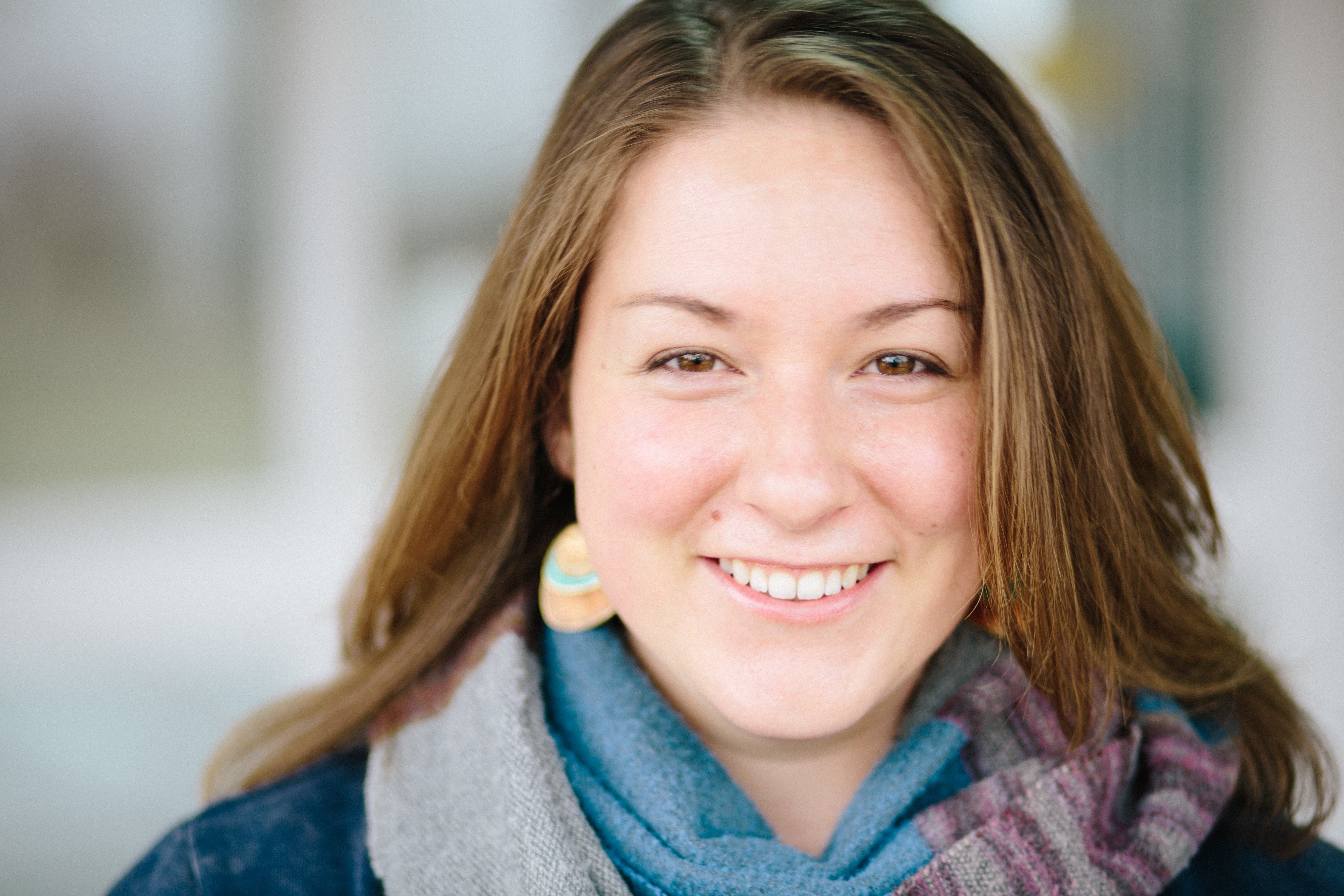
Shakespeare in the Ruff is thrilled to announce our summer show: A Midsummer Night’s Dream! This is a play that we’ve had our eye on since the beginning, and we’ve finally found our “Dream” Director. We are happy to welcome Megan Watson!
Megan is the Artistic Associate at The Grand Theatre in London. She has run their High School Projects for the last two years (2016: Julius Caesar, 2017: A Shakespeare Mixtape) and is building their new play development program: Compass. In 2018, she will be directing The Glass Menagerie.
Megan on Midsummer:
“For me, both professionally and personally, 2016 rang out as a call to action. A call to be more political, more articulate and more fierce with my intention to create theatre that is part of a solution. The American presidential election has foregrounded hate and fear. As we feel the ripple effect of that in our own communities, we are required to take a closer look. Specifically for me as a theatre artist, this means taking on the systemic gender and racial inequality that our canon and traditions uphold. How do we take Shakespeare’s plays, which on one hand contain an unparalleled expression of the human experience and on the other, when not approached critically, serve as a platform for misogyny and racism? This has always been my struggle when staging Shakespeare and I am more committed than ever to take on that challenge in this volatile social and political climate.
In following Ruff for the last five years, I have seen them cultivate a clearer and sharper sense of who they are and what kind of ‘Shakespeare in the park’ company they strive to be. Reinventing and innovating the classics and specifically Shakespeare seems to be a common endeavour. However, Ruff approaches this with a fearlessness that is unmistakable in their productions. Their practice of taking Shakespeare’s plays and mining them for humanity and beauty – while blowing open and leaving behind the parts that perpetuate archaic and negative stereotypes – is why I am thrilled to join the company this season. I want to stage plays that reflect the world I want to work, live, play and love in.
And so we began the process of selecting the right play for the 2017 season. Kaitlyn and I visited the park together and she shared stories about the Withrow and Ruff community. I thought back on the magical experiences I have had there: setting up my picnic blanket, snuggling in close with loved ones and being transported. Even as we considered Shakespeare’s more overtly political plays, A Midsummer Night’s Dream kept surfacing as the right choice. With the barrage of negative media coming at us, it became clear to me that our best offence against all this HATE is to fight back with LOVE. With this in mind, our production of Dream will be a wild celebration of what is possible when we set ourselves free, believe in magic and plumb the depths of our psyche to discover more about who we really are. Suddenly, in 2017 it seems radical to believe in and pursue love, magic and beauty.”
A Midsummer Night’s Dream runs August 15th through September 3rd, 2017 in Withrow Park. All performances are Pay What You Can and more details can be found on our website soon.

My adult life has be characterized by radical geographic change, moving from Montreal to London, then to New York City, and then to Toronto in under ten years. I’ve thrived on shaking it up and seeking re-invention. It’s enabled some incredible adventures and opportunities, but I always sensed that it also left me missing something; a sense of community. When Brendan approached me about re-starting Shakespeare in the Rough (now Ruff), in 2011, I began my journey of finding that sense of community.
When, over a year ago, Brendan reminded us that we needed to start thinking about a new Artistic Director, I automatically thought, ‘well, I guess I’ll leave too. We’ve had a good run, and after all, I came with Brendan, it only makes sense that I leave with him, five years as the Associate Artistic Director seems like enough.’
My need for re-invention and change kicked in, and then something else kicked in; a realization that my dedication to this company has grown beyond one person and is connected to the community we’re a part of. I realized that I now have that thing in my life that throughout my 20’s I felt was missing. I have learned so much being a part of Ruff, grown, and struggled, and delighted in the successes of everyone involved. Have felt supported in tough times and have met so many wonderful people along the way.
I am not ready to leave Ruff behind. I’m part of a company of people whom I adore and respect and am challenged by, and a Board of Directors who help us make our wildest visions come to life. Shakespeare in the Ruff is a platform to share Shakespeare’s incredible plays and we get to do that with the most generous community of people who join us in Withrow Park every summer. I love Shakespeare. Since reading Hamlet in Grade 11 and dreading the day we got to Act V, knowing he would die, I was hooked. I love seeing his plays, acting in them, and talking about them. I love so much of what Shakespeare’s writing has to offer and also have some serious beef with other elements of it.
I know we are at an advantage; our society makes a lot of room for Shakespeare, so my intention is to consciously populate that space with people who are less commonly offered that megaphone. To look at his plays from a less traditional angle, to defy convention, and to make them our own.
And a large part of addressing this has to do with how we cast our shows; casting at least as many women as men in our shows and having people of colour in lead roles is a priority for me. That may not sound revolutionary (and many companies across this city are doing it!), but until it is a given, until it is done at the highest level, until it is the new norm, viva la revolution!
In a country that is so diverse in culture and in language, where gender equality is being touted on every level, why is theatre, and Shakespeare in particular, an exception? Because it was written that way? I don’t believe that it has survived for 400 years simply because it was written that way. It has survived because it has the quality to be deeply personal, reinvented, twisted into knots, and thrive because of it.

Brendan & Kaitlyn during rehearsals for Macbeth: Walking Shadows
I feel ready to take on this beautiful challenge, in large part because I follow in the footsteps of an incredible leader. Brendan McMurtry-Howlett has an infectious spirit, mobilizing those who have been and those who are Shakespeare in the Ruff. It’s one thing to take the reigns of a company that has a loyal audience base, decent infrastructure, and operating funding, and it’s another things to start something from nothing more than the shadow of a past company and make it into something so vital. Brendan stepping down is something he said he would do from the beginning; ‘I’ve got five years in me, and then I’ve got to move on’. And true to his word, he is. We will miss him very much, but his passion and vision for this company have infected us all. As he transitions into being an Artistic Associate, I know that his creative presence will also play a role in how the company evolves.
So that’s what we’re aiming for and what I want for Ruff moving forward. No small feat and impossible to do alone. Thankfully I’m not; with Eva Barrie, AJ Richardson, and Caitlin Sullivan, we forge on creating the accessible, joyful, challenging work that Ruff is known for, while running our Young Ruffian Apprenticeship Program for teens in tandem.
I’m so excited to share what we have in store for our sixth season, which we’ll be announcing in early May. So here we go…the readiness is all.
-Kaitlyn Riordan
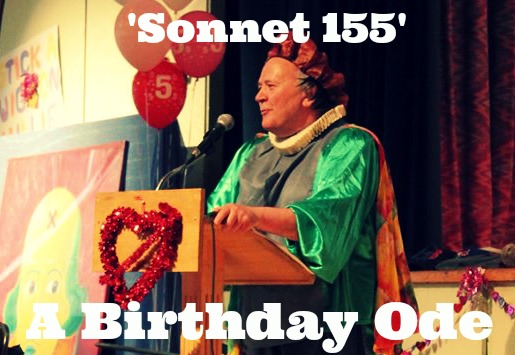

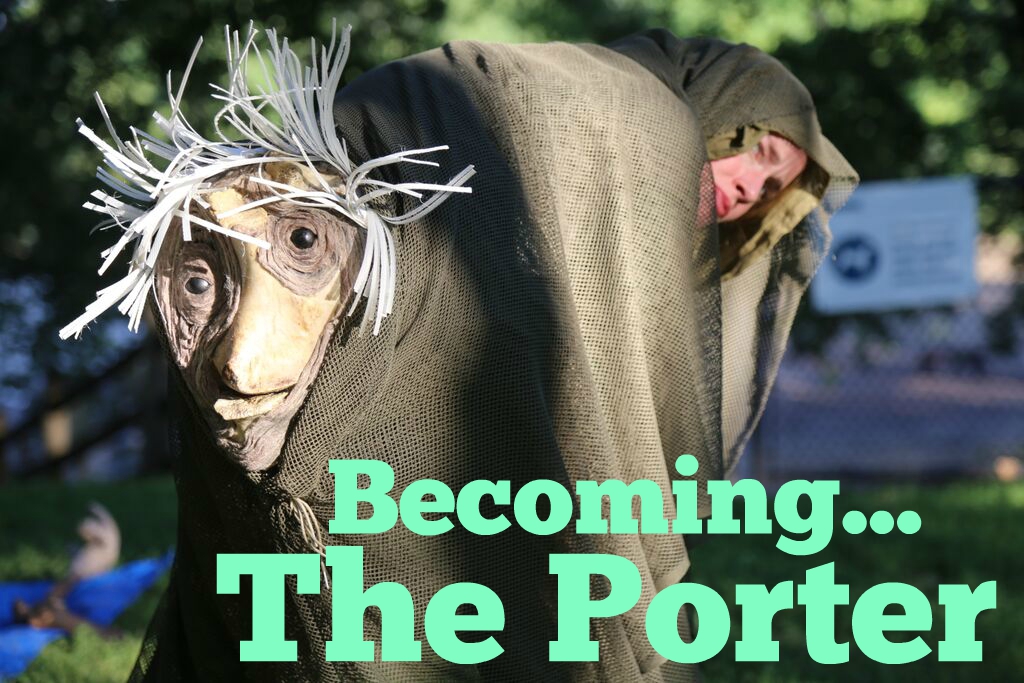
I’ve lived in fear of improv for most of my life, certainly my adult life. All my buddies are improvisors, I’ve seen hundreds of improv shows, I’ve always secretly wanted to do it, but I’ve always been paralyzed by fear. To the point, that on a regular basis, I would have improv nightmares, where I’m called onstage incorrectly to do an improv show. But then this year, I thought, enough is enough, I will conquer my fear of improv, and have been doing improv shows with Sex-T-Rex (a comedy group that I’m a member of) all year.
STEP 1:
When I heard that I’d be playing The Porter, in Shakespeare in the Ruff’s ‘Macbeth; Walking Shadows’, I was excited to get the one comedic role of the show. We were in rehearsals and I was working on getting off-book, and was pretty much there, when I received a text message from Brendan (the show’s director) and Zach (the puppet creator) saying that they were thinking of not using the text at all. I was excited about it, because doing a scene and following the beats of it, is a world I’m comfortable playing in. But when I read the text a little further it said ‘we’re hoping for it to be an improvised clown routine’ and I pretty much shit my pants.
getting off-book, and was pretty much there, when I received a text message from Brendan (the show’s director) and Zach (the puppet creator) saying that they were thinking of not using the text at all. I was excited about it, because doing a scene and following the beats of it, is a world I’m comfortable playing in. But when I read the text a little further it said ‘we’re hoping for it to be an improvised clown routine’ and I pretty much shit my pants.
Then, when I showed up on that day of rehearsal, and they told me they were thinking of making it the ass puppet, and I was even more terrified. Ingrid Hansen had developed this puppet during Ruff’s Macbeth workshop last December, and I had seen it on a video and thought it was really cute. She put a mask on her butt and put a cloth over the rest of her body, bent over, put her head between her knees, and used her hands sticking out in front as the puppet’s hands. Very contorted, with her feet backwards. It was fine, in theory, but the little I remembered from clown is that you’re supposed to constantly check-in with your audience, and in order to do that with my ass, it was going to be very difficult. So then, for what felt like two hours, though I’m assured is was more like one hour, I was improvising for the cast; it became an exercise in not panicking.
with your audience, and in order to do that with my ass, it was going to be very difficult. So then, for what felt like two hours, though I’m assured is was more like one hour, I was improvising for the cast; it became an exercise in not panicking.
So whenever we came to The Porter scene in rehearsals, I was filled with dread. Not only was I contorted, but to be contorted for that length of time, and it was hot, and I literally felt like an ass. No one was laughing, I didn’t know what it looked like, I was stumbling around thinking ‘this isn’t funny and I literally have to make up what I’m doing on the spot’. Then they gave me these arms, which were really heavy, and then the keys, which were ever heavier. There was one day, when I went off with Zach to work on The Porter, but all we did was talk about my anxiety and didn’t actually do any work. When we came back, I felt so unprepared and I just tried to smile through it, because what else am I going to do? I was expecting to conquer my fear of improv, but come on! As a clown, with my ass, that IS my nightmare (laughs).
on The Porter, but all we did was talk about my anxiety and didn’t actually do any work. When we came back, I felt so unprepared and I just tried to smile through it, because what else am I going to do? I was expecting to conquer my fear of improv, but come on! As a clown, with my ass, that IS my nightmare (laughs).
STEP 2:
But then one day, really close to the end of the process, Brendan sent everyone off with their Young Ruffians (the teenagers in Ruff’s apprenticeship program ), except for mine: Amie & Cheyenne, which he told to stay and watch me do The Porter. ‘Oh great’, I thought, ‘any respect that have/may have had for me will immediately be gone, so that’s great’. But it went alright, and they giggled throughout as Brendan and Zach yelled instructions of things to do with him. It was sort of the first time I had had an audience and was starting to get a sense of what was funny and what wasn’t.
), except for mine: Amie & Cheyenne, which he told to stay and watch me do The Porter. ‘Oh great’, I thought, ‘any respect that have/may have had for me will immediately be gone, so that’s great’. But it went alright, and they giggled throughout as Brendan and Zach yelled instructions of things to do with him. It was sort of the first time I had had an audience and was starting to get a sense of what was funny and what wasn’t.
And then, my big ‘aha moment’ was when they asked to put the puppet on. My first reaction was, why on earth would you want to? But they were so into it and both really wanting to do it and then the wonderful thing that happened was, that it was the first time I saw what it looked like. I was able to ask it to do the things that I had been asked to do, and I finally saw what worked and what didn’t and the words that Zach and Brendan said to me finally made sense. ‘It looks really funny when the arms are in the air’, or ‘the faster the feet move the better’. Just all of these things that were theoretical, I was finally watching happen, and realized that The Porter is actually quite delightful. And so it was a complete 180; I was inspired but their keenness, they didn’t have the hang ups that I had and I thought ‘oh my gosh, this is just a silly puppet’ and now when I go to do it, I have a better picture in my mind of what it looks like. And for me, being a puppeteer first, the picture is really important and you can’t do that with The Porter, even with a mirror, you’re looking at it upside-down and backwards.
and what didn’t and the words that Zach and Brendan said to me finally made sense. ‘It looks really funny when the arms are in the air’, or ‘the faster the feet move the better’. Just all of these things that were theoretical, I was finally watching happen, and realized that The Porter is actually quite delightful. And so it was a complete 180; I was inspired but their keenness, they didn’t have the hang ups that I had and I thought ‘oh my gosh, this is just a silly puppet’ and now when I go to do it, I have a better picture in my mind of what it looks like. And for me, being a puppeteer first, the picture is really important and you can’t do that with The Porter, even with a mirror, you’re looking at it upside-down and backwards.
Now that the show is running, it’s less improvised, there are beats, but it’s still loose. Getting to this point was all improv. Because this was so terrifying for me, but I’m doing it and it’s going well, it’s been huge, it’s been such a huge step. If it wasn’t going well, it would still be huge, but it would be a different journey.
And, I’ve heard from lots of people saying it’s funny. There was a tweet recently saying ‘I finally laughed at The Porter’ and I thought YES! That was my whole goal, but I didn’t think I’d achieve it this way. I’m really really happy that people like it, that they’re laughing and responding, I mean doing comedy, that’s all that matters, silence is death. Especially doing comedy with your ass. I’ve seen and done bad improv and I’m just glad that this isn’t one of those experiences.
-Kaitlin Morrow
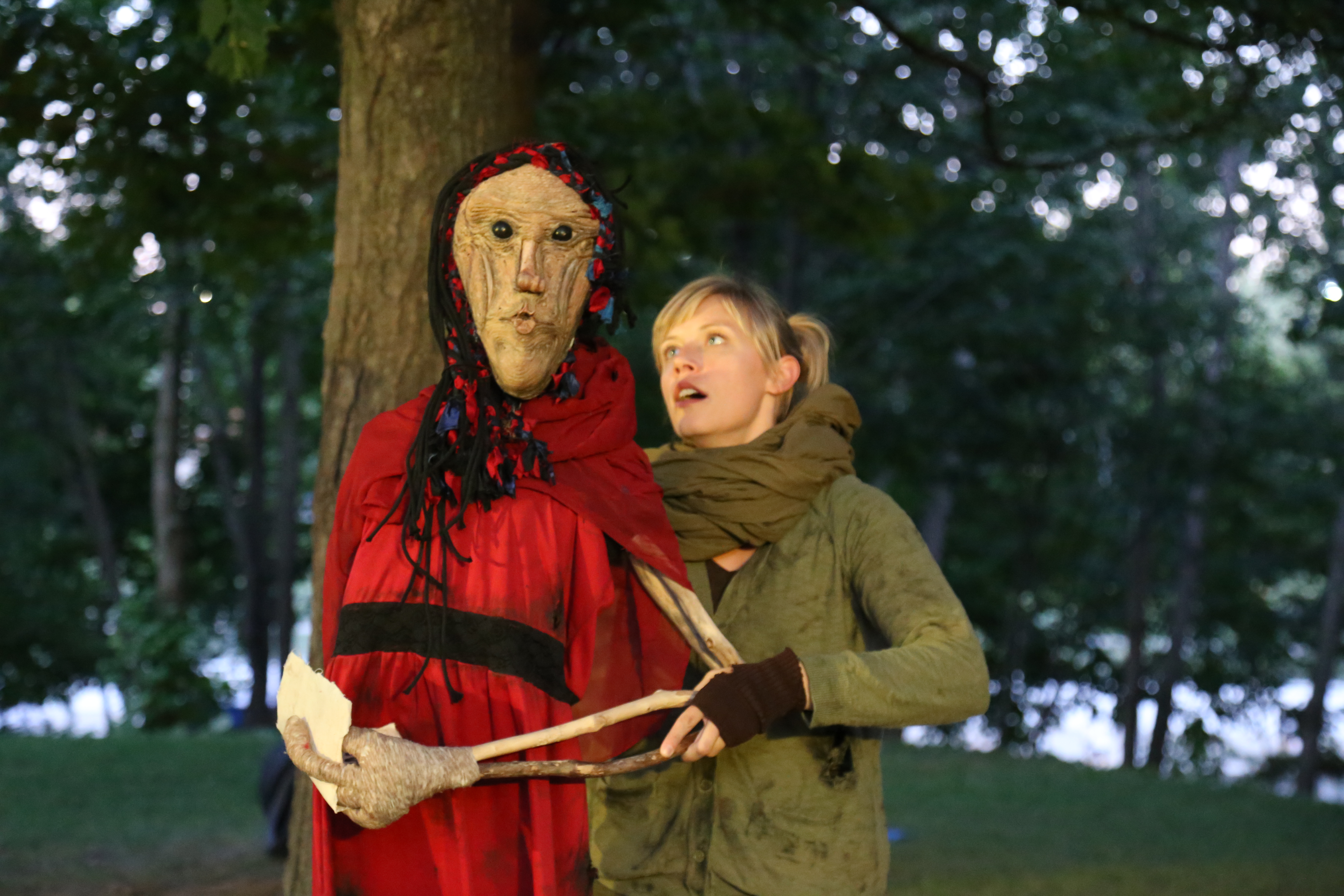

People keep asking what possessed us to combine Shakespeare and puppetry; as we head into the final week of rehearsals for ‘Macbeth: Walking Shadows’ (Aug 13th-30th), we thought we’d pass the buck, and ask someone else that very question. When we heard about Jillian Keiley’s decision to bring puppets to the world of ‘Twelfth Night’, next season at the NAC, we were very excited (and relieved), that we weren’t the only ones who thought puppets and Shakespeare would make a great combination. We’ll get around to answering this question ourselves, but for now, back to rehearsal. -SitR
Programming Shakespeare at Canada’s National Theatre – by Jillian Keiley
Even though I was raised on and have directed, acted in or assistant directed eight different Shakespearian productions, I have always felt kind of politicized about the sheer amount of Shakespeare that Canadians produce. Don’t get me wrong – I love Shakespeare. But I’m also a nationalist. And it strikes me odd that the primary storyteller in our theatres is a man from another continent who had never dreamed of knowing Canada.
I believe in that good kind of nationhood: shared ideals, pride of place, together we are better. And so I believe that when a Hannah Moscovitch play slays a new audience or when Robert Lepage makes the world believe that Canada (or at least a part of Canada) is at the cutting edge of the craft – I think that’s good for us, not just as an arts loving community but as a country: our stories, well told. So I do believe that Canadians and Canadian artistry should have priority in our National Arts Centre space.
However, when I took over the reins at the NAC I didn’t want to restrict the programming to only Canadian writers. I am from the school that believes that the writer is a very important key creator in identifying the ‘nationality’ of a play, but I also believe that the director or ensemble of artists can interpret a play in such a way that is so unique to that artist or to that community that the play becomes a Canadian expression, if not an entirely Canadian play. I think Raoul Bhaneja’s Hamlet is uniquely his version. I believe The Electric Company’s No Exit was as much about the art of that company as it was about Sartre. I saw Modern Times’ Macbeth several years ago and it was as unique a piece as I could imagine, using Shakespeare’s Macbeth as the primary of many layers. Chris Abraham’s gay wedding Midsummer Night’s Dream belonged more to the backyards of Toronto than anywhere else.
At the NAC, we have two ways of programming. We select six or seven shows a year to present from the multitude that we see live or on video. For our in-house productions, we bring together a group of actors from across the country to build that year’s Ensemble. The Ensemble inspires the choice of plays for the season. Often times, even though the Associate Artistic Director Sarah Garton Stanley and I pride ourselves on knowing as much as we can about the Canadian canon, we hit on a combination of people that seem to call for a classic which happens to be from somewhere else.
This coming season, for example, we happen to have the perfect alchemy of artists to do Twelfth Night. (Incidentally the other five shows for the Ensemble this year are Canadian.) I was very interested in how they would tell that story and hear that music. But also I wanted to see it envisioned by uniquely Canadian dreamers. So I went to a team of the most unique Canadian dreamers I know – The Old Trout Puppet Workshop. This group  of guys, who started out in a shed south of Calgary performing for Hutterites, had the kind of vision that could engage visually with all of the textual delights in Twelfth Night. So we moved forward with the plan to do a Shakespeare as imagined by The Old Trouts. It won’t be with marionettes or hand puppets so much as it will be visually animated using the Old Trouts’ signature style. The Old Trouts for years have done interpretive works that have blended quite animate inanimate objects with quite animated humans to great effect.
of guys, who started out in a shed south of Calgary performing for Hutterites, had the kind of vision that could engage visually with all of the textual delights in Twelfth Night. So we moved forward with the plan to do a Shakespeare as imagined by The Old Trouts. It won’t be with marionettes or hand puppets so much as it will be visually animated using the Old Trouts’ signature style. The Old Trouts for years have done interpretive works that have blended quite animate inanimate objects with quite animated humans to great effect.
The last Shakespeare the NAC produced (outside of presenting the visiting Raoul Bhaneja’s Hamlet) was Peter Hinton’s all Indigenous King Lear. It too was a very Canadian interpretation. I believe this Twelfth Night in the hands of the great artists in our Ensemble and the Old Trout Puppet Workshop, will offer audiences an entirely new theatrical experience; and a uniquely Canadian one at that.
Twelfth Night runs January 20th-February 6th, 2016, in Ottawa at The National Arts Centre.